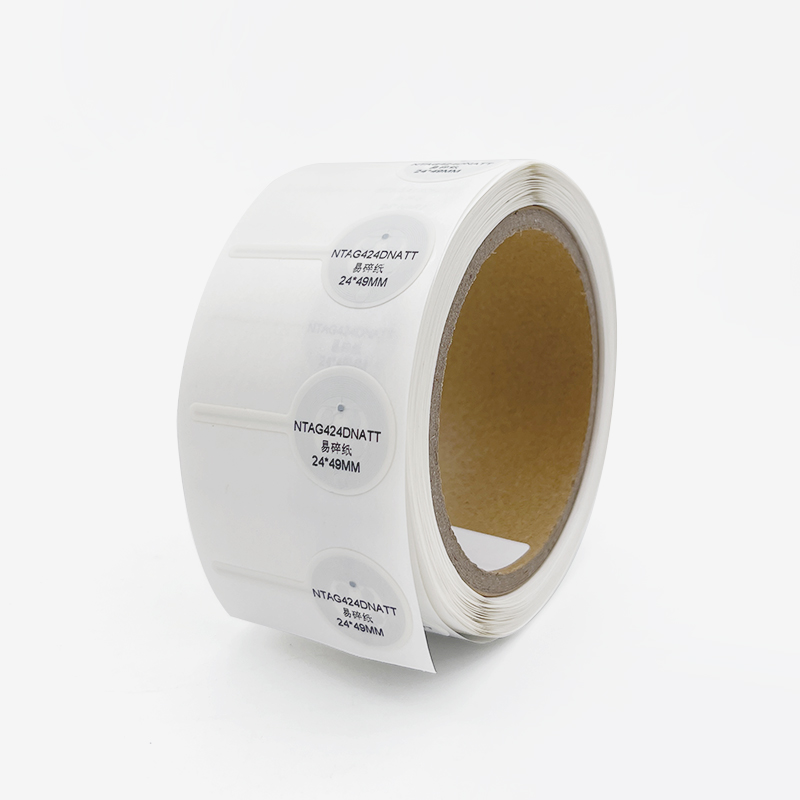
The Essential Difference Between RFID Tags and RFID Cards: Unlocking the Power of Radio Frequency Identification
Table of Contents
Understand the Key Differences, Use Cases, and Selection Guide for RFID Solutions
But when it comes to choosing the right RFID format, many buyers ask: “Should I use RFID tags or RFID cards?”
While both serve the purpose of wireless identification and tracking, they differ significantly in form factor, durability, functionality, and applications.
In this guide, we break down the differences between RFID tags and RFID cards, provide real-world use cases, and help you choose the right solution for your business needs.
What Is an RFID Tag?
RFID tags are versatile transponders used to identify and track physical objects wirelessly. They can come in many shapes and sizes, including:
- Adhesive labels
- Anti-metal hard tags
- Coin/disc-shaped tags
- Screw-mount or embedded tags
RFID tags are typically attached to:
- Inventory items
- Tools and equipment
- Containers or pallets
- Furniture, clothing, vehicles, or even trees
They operate at various frequencies—LF (125kHz), HF (13.56MHz), or UHF (860-960MHz)—depending on the range and data requirements.
RFID tags are ideal for industrial use, supply chains, and asset management.

What Is an RFID Card?
RFID cards are typically PVC-based cards in the CR80 size (standard credit card format). They house an RFID chip and antenna inside the card’s laminated layers.
Typical Uses of RFID Cards:
- Building and room access control
- Time and attendance systems
- Event ticketing and guest identification
- Hotel key cards
- Contactless payments
These cards are easy to carry in wallets or lanyards and are best for user identity, authentication, and access control.

Key Differences: RFID Tags vs RFID Cards
| Feature | RFID Tags | RFID Cards |
| Form Factor | Discs, keyfobs, buttons, nails, on-metal, wristbands | CR80 card (credit card size) |
| Primary Use | Asset tracking, logistics, equipment, livestock | Access control, ID, hospitality, ticketing |
| Mounting | Fixed via screws, glue, embedment, adhesive | Carried in wallets, badges, holders |
| Durability | Rugged, waterproof, high-temperature options | Light to moderate durability |
| Environmental Suitability | Outdoor/harsh environments | Best for indoor or user-facing use |
| Customization | UID, laser engraving, serial numbers, chip options | Full-color printing, logos, QR, barcodes |
| Cost | Varies based on materials and chip type | Lower cost for standard cards |
How to Choose: RFID Tag vs RFID Card?
Choosing between an RFID tag and card depends on your application, environment, and desired user interaction.
Ask yourself:
- Is the item stationary or moving through a process?
Go for RFID tags for asset tracking, pallets, equipment
Choose RFID cards for personal identification or door access - Is durability or ruggedness required?
RFID tags are ideal for outdoor, high-impact, or waterproof needs
RFID cards are better for everyday use in secure indoor environments - Is branding or presentation important?
RFID cards offer a larger surface for custom design and printing
Some tags (e.g., wristbands, keyfobs) also offer branding space - Do you need on-metal compatibility?
Use specialized on-metal RFID tags to prevent read issues
RFID cards are not designed for metallic surfaces
Real-World Use Case Scenarios
RFID Tag Use Cases
- A manufacturing plant uses rugged ABS on-metal RFID tags to track machine parts through various stations.
- A livestock farm uses UHF RFID ear tags to track cattle health, location, and vaccinations.
- A warehouse applies RFID adhesive labels on pallets to scan goods automatically at dock doors.
RFID Card Use Cases
- A hotel provides guests with MIFARE-based RFID room key cards, enabling secure room access.
- An office issues RFID employee cards for secure building entry and attendance logging.
- A conference uses printed RFID NFC cards as smart tickets for attendee access and session tracking.

Frequently Asked Questions (FAQs)
What is the main difference between RFID tags and RFID cards?
RFID tags come in many physical forms (disc, keyfob, on-metal, etc.) and are often used for tracking objects or assets. RFID cards are flat, wallet-sized cards primarily used for human identification or access control.
Which is more durable?
RFID tags — especially industrial-grade tags — are designed to withstand harsh environments, including heat, moisture, and impact. RFID cards are best for controlled environments like offices or events.
Are RFID cards rewritable?
Yes, many RFID cards are rewritable, depending on the chip type (e.g., MIFARE Classic, NTAG213). You can encode and re-encode user data unless the chip is locked.
Can I use RFID tags and cards in the same system?
Yes. Many RFID systems support multiple form factors, so you can use tags for inventory and cards for personnel access — all tracked through a unified platform.
How do I know which frequency to choose?
It depends on your application:
- 125 KHz (LF) – Good for access control, short-range scanning
- 13.56 MHz (HF/NFC) – Popular for cards, NFC, and medium-range applications
- 860–960 MHz (UHF) – Ideal for long-range asset tracking and logistics
Need Help Choosing the Right RFID Solution?
We’ve got you covered whether you need RFID for secure access, inventory tracking, or supply chain automation.
📩 Request a Free Quote or Sample Now
📱 Chat with us on WhatsApp: +86 138 2318 6864
We offer:
- Custom shape and chip options
- Bulk pricing
- OEM branding and pre-encoding
- UHF, HF, and NFC compatibility
Comments
Hot Products

RFID in Logistics: How to Eliminate RFID Misrouting and RFID Label Failures
RFID in logistics is more than just a tool to speed up processes. It has become a key part of how modern supply chains operate.

What Is RFID Waste Management
Imagine a city where every trash bin speaks — not literally — but through a tiny chip that tells the system when it’s full, when it’s emptied, and where it went. That’s what RFID waste management is doing today.

What are Bolt Seals and their Applications? | Complete Guide
In global trade and logistics, bolt seals play a crucial role in ensuring cargo security and compliance. These small but powerful devices are designed to lock shipping containers, trailers, and cargo doors with a tamper-evident mechanism.

What is an RFID Card Protector? Benefits, Use Cases, and Buying Guide
RFID technology (Radio Frequency Identification) is everywhere: in your credit cards, ID badges, transit passes, hotel room keys, and more. It offers speed and convenience, but it also opens the door to a new kind of digital theft called “skimming.” That’s where an RFID card protector comes in.

RFID Wristbands for Events: Bulk Buying Guide for Organizers
RFID wristbands for events are becoming the go-to solution for organizers who need faster entry, fraud prevention, and cashless payments at concerts, festivals, and sports venues. Unlike paper tickets or QR codes, these smart wristbands use embedded chips to streamline access, secure transactions, and improve the guest experience.

How RFID Tag on Windscreen Improves Vehicle Access Control and Toll Systems
In today’s fast-paced world, vehicle identification needs to be quick, secure, and contactless. An RFID Tag on the Windscreen provides exactly that — a reliable way to manage toll collection, parking, and gated access without stopping vehicles.
Tags
RELATED BLOGS

RFID in Logistics: How to Eliminate RFID Misrouting and RFID Label Failures
RFID in logistics is more than just a tool to speed up processes. It has become a key part of how modern supply chains operate.

What Is RFID Waste Management
Imagine a city where every trash bin speaks — not literally — but through a tiny chip that tells the system when it’s full, when it’s emptied, and where it went. That’s what RFID waste management is doing today.

What are Bolt Seals and their Applications? | Complete Guide
In global trade and logistics, bolt seals play a crucial role in ensuring cargo security and compliance. These small but powerful devices are designed to lock shipping containers, trailers, and cargo doors with a tamper-evident mechanism.




